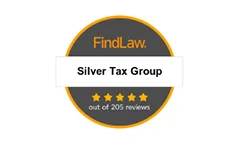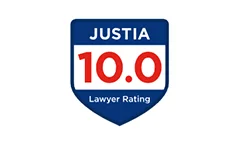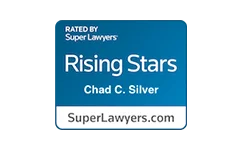Everything You Need To Know About The Trust Fund Recovery Penalty (TFRP)

According to IRS estimates, roughly $4 billion in payroll taxes go uncollected each year.
That is almost as much as the United State’s budget for the entire border wall!
Enter the Trust Fund Recovery Penalty—or TFRP.
The Trust Fund Recovery Penalty is one of the most stringent of all tax penalties, and anybody who does work to avoid it could be in for a shock if it is ever levied against them.
Sometimes called “the devil” of taxes, TFRPs, and their implications, can sink even the most successful of business. Even worse, in some cases, jail time can also be levied along with the penalties.
Fortunately, there are ways to keep yourself and your business safe from this hefty retribution from big brother.
The best way to start is to get informed. So, keep reading to find out about TFRP and how to avoid it, as we break done everything you need to know.
What Is the Trust Fund Recovery Penalty?

The Trust Fund Recovery Penalty exists to discourage and penalize those who have withheld taxes from employees, and not paid them over to the IRS.
When you take on employees, you also take on the responsibility to deduct any applicable taxes from their gross salary. You are also responsible for filing this and paying all withheld amounts to the IRS.
If the IRS deems that you have willing omitted to make these payments, this can give them grounds to level a TFRP. According to the IRS page, willing equates to “voluntarily, consciously, and intentionally.”
In other words, if you consciously decided not to pay over any taxes withheld from employees, you could be open game for the Trust Fund Recovery Penalty.
Who Is Liable for the TFRP?
We’ve gotten clear of what the TFRP is. But who exactly is liable for this?
The IRS states that it can be anybody responsible for withholding, accounting for, depositing, or paying specified taxes. This can include:
- An officer of a corporation
- Directors
- A sole proprietor
- A partner
- A trustee or agent
- An employee of any form of business
- Bookkeepers and accountants
- External bookkeepers and accountants
- Shareholders (in certain cases)
As you can see from the above list, the penalty is levied against the individual responsible for the willful non-payment—not necessarily the company or organization.
How Much Is a Trust Fund Penalty?

And now the part we have all been waiting for. Exactly how much is the TFRP.
The trust fund penalty is one of the highest of all of the IRS penalties and is sometimes called the “100 percent” penalty. This is because the penalty requires the person responsible to pay the full amount outstanding, plus a penalty on this of 100 percent.
This means that you have to essentially pay back double of whatever is owed.
Additionally, you could also be fined up to $500,000.
Hefty stuff right! And it can even get more severe.
Can I Do Jail Time for Unpaid Payroll Taxes?

In short, yes. Someone who was directly and willfully responsible for unpaid payroll taxes could, in certain cases, face a sentence.
This can come into play if the IRS deems your case to be tax evasion, whereby guilty parties can face up to five years sentencing.
Although it is possible to attract jail time over unpaid payroll, the IRS is likely to dish out the fines and penalties for less serious cases.
What Is the Procedure for a Trust Fund Penalty?

Now that we have covered what the TFRP is and what exactly the penalty consists of (cue TA, ie. tax anxiety) let’s move on the procedure involved in TFRP cases.
It is important to know this, as if you are ever faced with the Trust Fund Penalty, you may be able to combat it based on procedural discrepancies.
First Comes an Investigation, Then a Letter
One of the first things that will happen if the IRS suspects you of keeping back payroll taxes is that they will assign a revenue officer to investigate company documents and determine responsibility.
Once this is done, the IRS is legally bound to inform you of the debt and that they are leveling the TFRP against you.
If the IRS deems you to be personally guilty of holding back payroll taxes they will send you a letter via registered mail, called the IRS Letter 1153.
This is populated with your name and details and notifies you of the situation. Along with this letter are two documents. One of them outlines the amount of money you owe and the stipulated TFRP amount. The other lists your rights in the dispute.
Upon sending you this letter, the IRS is obligated to keep a copy of the certification of the letter as proof of its dispatch and the date of sending.
You Can Then Decide What Action to Take
Upon receipt of Letter 1153, taxpayers have the choice to either pay over the debt and penalty or contest the TFRP.
In some cases, if you have legitimate grounds, you may be able to reduce or clear the liability completely. This happened to one individual who contested that the IRS did not follow proper procedures when notifying him of the TFRP.
Note that you have 60 days in which to do this, via written protest with the IRS Appeals Office.
How to Avoid the Dreaded TFRP

Having to deal with the dreaded TFRP is not something that any business owner wants to face. Even if it turns out that a payroll employee is the one liable—battling out a TFRP case is nobody’s idea of a fun time.
Fortunately, you can keep your operation safe from this taxation nightmare. The way to go about this is of course by implementing thorough payroll practices.
By ensuring that payroll is handled professionally and correctly, you can gain peace of mind and security in the knowledge that all of your company’s payroll taxes are going where they are supposed to.
What to Do If It Has Been Levied Against You
If on the other hand, you are facing a TFRP here and now—there are a couple of things that you can do.
the first is to ensure that the IRS is accurate in their allegation and that they have followed proper procedure in notifying you.
What’s more, we strongly advise that you seek out legal assistance. Without the pros, you will likely have to pay the full amount levied against you. But with a pro? You just might just be able to reduce that liability or even clear it in some fortunate cases.
Example Where The Taxpayer Fought Back
In a recent case, the IRS told a taxpayer that he had not paid the right amount of quarterly taxes, and then supposedly sent him Letter 1153. The taxpayer, a small business owner, said that he never got the letter. He fought back and claimed that if the IRS wanted to use the TFRP as it planned, the agency was required by law to give him proper notice.
The taxpayer’s position was that he had never received proper notice from the IRS, so the IRS could not collect from him. The court agreed because:
- The taxpayer “credibly testifies that he never received [the letter].”
- There was no trustworthy record of the IRS ever mailing Letter 1153 to the taxpayer.
- The only copy of a Letter 1153 in the IRS case file was “undated, unsigned and incomplete.”
- An IRS agent manually updated an entry in this case file with a note that said the letter was sent to the taxpayer.
- The IRS did not act in a manner consistent with having sent the taxpayer Letter 1153, as it did not follow its usual process for collecting TFRP within 60 days (instead waiting 21 months).
Manage Your Payroll Effectively So You Never Have to Deal With a TFRP

You can probably agree after reading this that the TFRP is pretty hairy stuff. Fortunately, there ways to effectively deal with them, and fireproof your business against payroll penalties.
Do you need urgent help with either of these areas? If so, stop stressing, and simply contact us, or check out our emergency tax services. Taxes are our game—and tax defense is our superpower, so don’t delay.
Everything is easier with a (calm and collected) pro on your team.





Free Consultation 24/7
Chad Silver
Attorney

Silver Tax Group Locations


777 South Flagler Drive
Suite 800 – West Tower
West Palm Beach FL 33401

4005 Guadalupe St
Suite C
Austin, TX 78751


